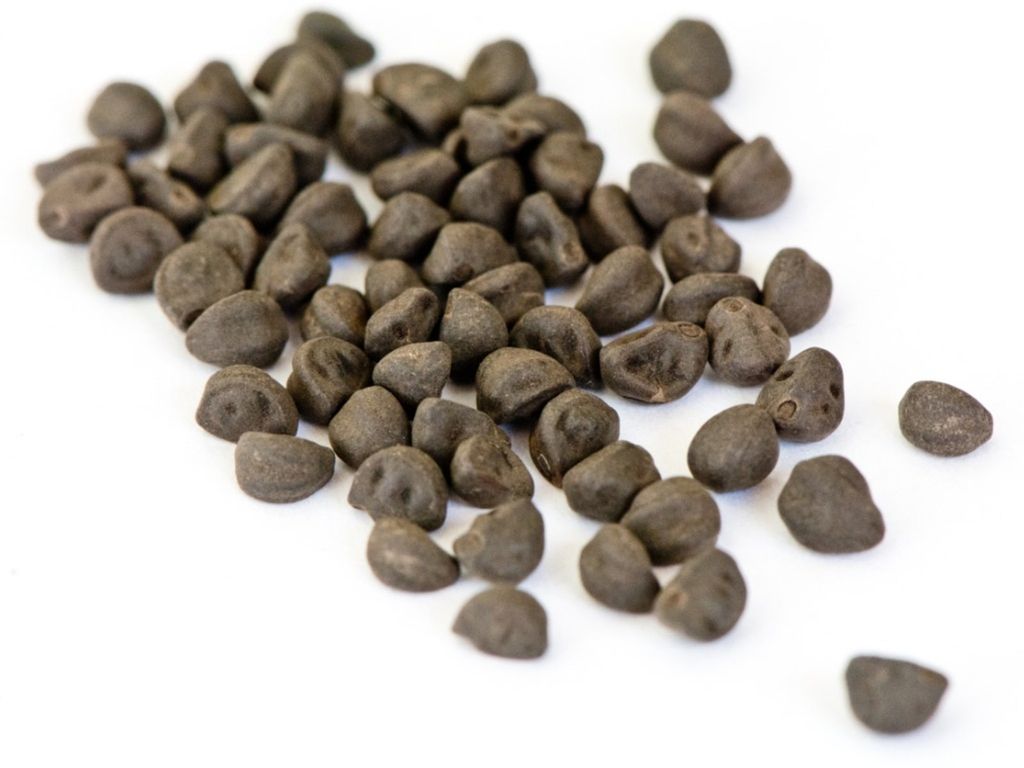Morning glory, Ipomoea purpurea, is a flowering annual vine for USDA Hardiness Zones 2 to 11.
Native to Mexico, it has trumpet-shaped blooms that measure two to three inches across. Colors include blue, pink, purple, and white.
We link to vendors to help you find relevant products. If you buy from one of our links, we may earn a commission.
Our guide to growing morning glories has all you need to know to cultivate I. purpurea at your house.
Finally, our list of 15 of the best cultivated morning glories gives you a wide range of interesting options.
We’ll talk about how to get seeds and store them so you can plant them the next year in this article.
Morning glories (Ipomoea spp.) are classic annual vining flowers that self-seed prolifically. Their trumpet-shaped blooms unfurl in the morning and fade by midday. But did you know you can save their seeds to plant more free flowers next year? Learning to recognize when morning glory seed pods are ripe for picking is key to collecting viable seeds.
The Life Cycle and Seed Development of Morning Glories
Morning glories grow quickly from seeds sown directly in the garden after all danger of frost. The vines can reach 10 feet or more by summer. Pretty bell-like flowers in shades of blue, purple pink, white or red appear in midsummer.
Behind each faded morning glory bloom, a rounded seed pod develops at the end of the flower stem. Inside, seeds are maturing. Here’s a visual guide to the life cycle:
-
A new flower bud forms, enclosed in a tight spiral.
-
The bud opens into a gorgeous trumpet-shaped morning glory bloom that lasts only one day.
-
The flower dies, leaving behind a green bulbous calyx on the stem.
-
The calyx swells into a round seed pod as seeds develop inside.
-
The pod turns brown and brittle when seeds are mature,
Timing is everything when it comes to identifying ripe morning glory pods for seed saving. Pick too early, and seeds may not be viable. Wait too long, and pods may split open, scattering seeds.
What Do Morning Glory Seed Pods Look Like When Ready to Harvest?
Monitoring pods daily as they transition from green to brown is the best way to pinpoint peak ripeness. Here are telltale signs mature pods are ready for picking:
-
Color dries from green to light tan or brown.
-
The pod feels brittle and crumbly between your fingers when gently squeezed.
-
Seeds rattle inside when shaken.
-
The pod may split open slightly at the seams.
-
A dark brown line forms around the middle.
-
The pod readily separates from the vine stem when touched.
Ripe pods are usually about the size of a marble or large pea. Their oval shape resembles a tiny football. Sometimes multiple pods grow tightly clustered together.
If you’re unsure if a pod is fully ripe, carefully split it open and inspect the seeds inside. Dry, dark seeds are mature. Light, soft seeds need more time.
Techniques for Harvesting Morning Glory Pods
Picking ripe morning glory seed pods is quick and easy:
-
Wait for a dry, sunny day if possible.
-
Morning is ideal after any dew has evaporated.
-
Snip off entire mature pods individually just below the calyx.
-
Or crush ripe pods right on the plant between your fingers to dislodge seeds.
-
Use a bag or container to catch falling seeds and pods.
-
Spread the harvest out to dry further indoors for about a week.
-
Separate seeds from debris and store in an airtight container.
Take care not to bust open unripe pods still growing on vines or immature seeds may fall to the ground. Focus only on plucking pods that meet the readiness criteria.
What to Do With Green Pods or Seeds
Sometimes weather or lack of time forces you to harvest morning glory pods before they fully ripen. Don’t despair if your collected pods are still greenish or seeds seem underdeveloped. Just take a few extra steps:
-
Spread green pods in a single layer to dry out for about two weeks.
-
Check pods and crush any that feel crispy to release seeds. Discard empty ones.
-
Immature seeds may be lighter in color but can still germinate.
-
Allow greenish seeds to dry completely for several weeks before storage.
With extra drying time, morning glory seeds salvaged from green pods often mature enough to germinate the following growing season.
Storing Morning Glory Seeds Correctly
To maintain viability of your collected seeds, proper storage is a must:
-
Let seeds dry on a screen or paper plate for about a week after harvesting pods.
-
Place dried seeds in sealed glass jars, envelopes, or plastic bags.
-
Store containers in a cool, dark, dry spot like the fridge.
-
Use seeds within 1-3 years before viability declines.
-
Avoid humidity and warmth which encourage mold growth.
Follow these tips, and your harvested morning glory seeds should readily sprout into a glorious bounty of charming vines and flowers next season.
Admiring the Morning Glory Life Cycle in the Garden
Now that you know how to identify and pick ripe morning glory seed pods, you can appreciate the fascinating life cycle as it unfolds in your garden:
-
Watch for flower buds to emerge and tightly unfurl into lovely blooms.
-
Witness flowers fade in afternoon, leaving behind green bulbous calyxes.
-
Observe calyxes swelling into round pods sheltering seeds.
-
Keep an eye on pods turning brown and brittle as internal seeds mature.
-
Marvel as self-sown seedlings emerge next spring from fallen seeds.
Understanding the entire sequence from flower to seed to seedling allows you to gain skills for continuing your morning glories, whether the classic annual vine or enchanting perennial species like Ipomoea indica. Simply collect those ripe seed pods!
From Flower to Pod
When a morning glory flower is young, it is a thin, puffed bud that is folded in a spiral and ends in a soft point.
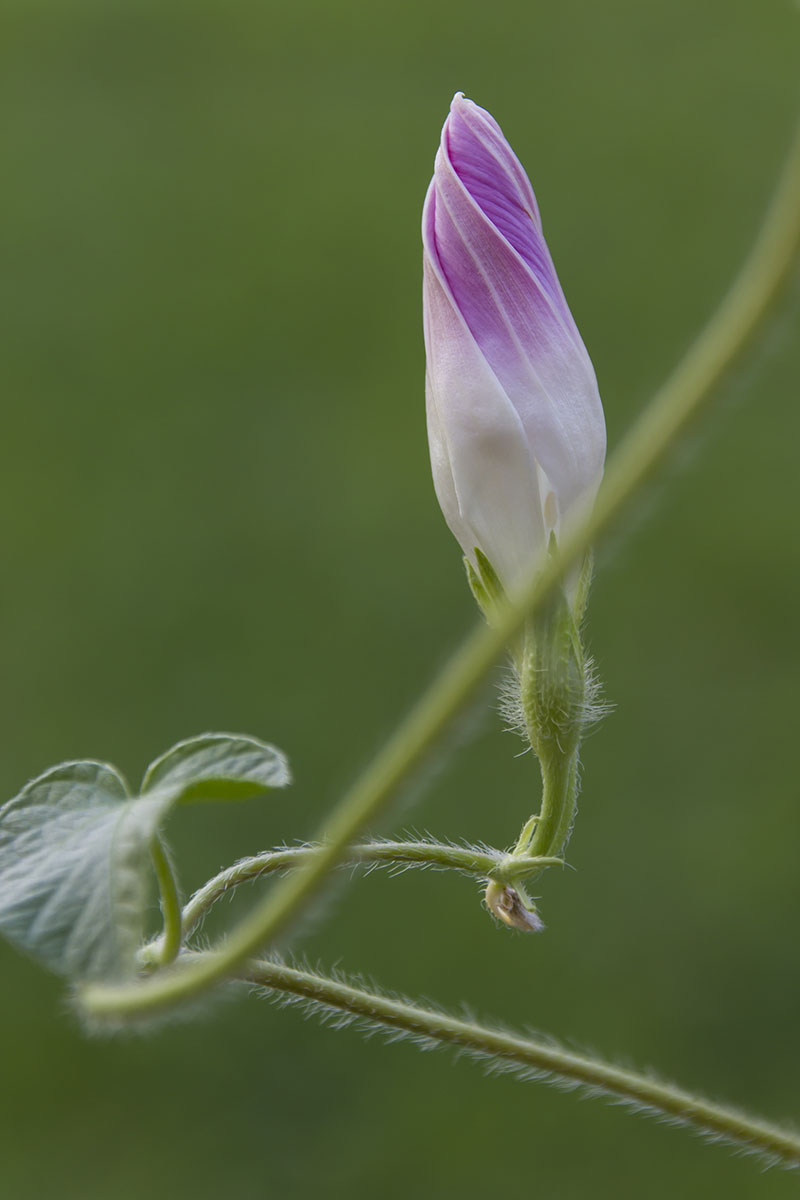
It opens into a rounded hexagonal bell-shaped blossom that lasts for one day.
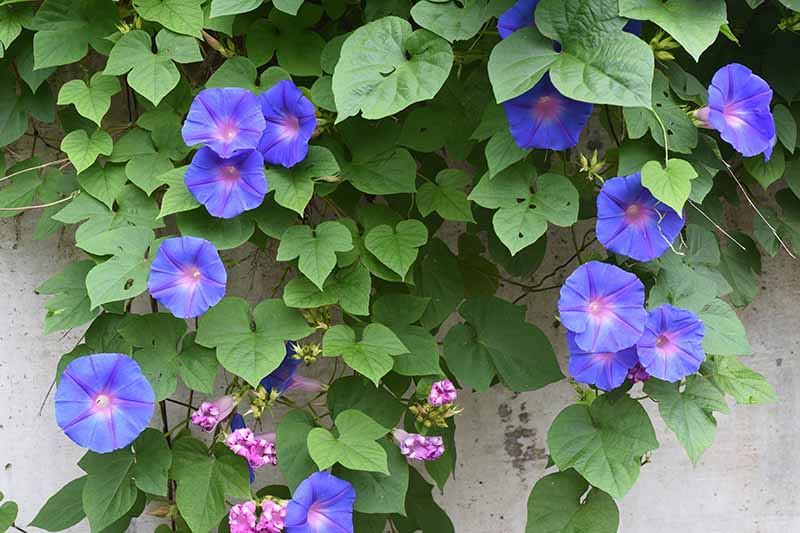
After blooming, the flower closes, folding its edges inward before dropping off the vine.
Photo by Dinkum, Wikimedia Commons, via
It leaves behind an empty green calyx with flared, pointed tips. To me, it resembles a jewelry setting without a stone.
A seed pod forms inside the empty calyx. It looks like a rounded green bump with a little point on the bottom.
Buds, flowers, and pods may appear simultaneously on the vines.
Gradually, each pod turns brown and papery, and the seeds ripen to brown or black. That’s when they are ready to harvest.
By season’s end, all that remains of the vines are brown withered leaves, stems, and pods.
Morning glory pods often appear in clusters.
Photo by AnRo0002, Wikimedia Commons, via
Pods that are brown, papery, and break when you touch them are ready to pick.
Here’s the collection process:
- Choose a dry day. If it rained the day before, wait until tomorrow.
- Late in the morning, when the dew has dried up, go into the garden.
- Place a bag or container under a dry brown pod or group of pods.
Here you have options:
- Take pods apart and let them fall into the bag.
- You can also break up the pods between your fingers and thumb to get the brown and black stuff out and let it all fall into the bag.
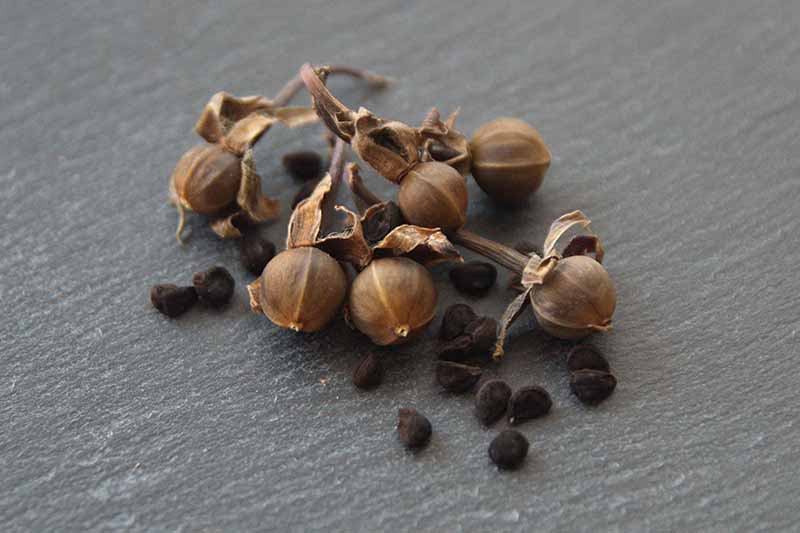
Either way, you’re going to have both seeds and chaff in the bag when you are through collecting.
- Lay out what’s in the bag on a light-colored sheet or tablecloth.
- Crumble unbroken pods to release their contents.
- Throw away the chaff in the garden or on a compost pile and save the seeds.
It’s as simple as that.
In addition to I. purpurea, there are other types of morning glory, including the white night-blooming moonflower, Ipomoea alba.
The way they are picked and stored is the same, but when they are ready, the seeds are light tan instead of brown or black.
To keep your harvest safe, put the seeds in a container that won’t let air in, like a baby food jar or sealed envelope, and keep them somewhere cool, dark, and dry.
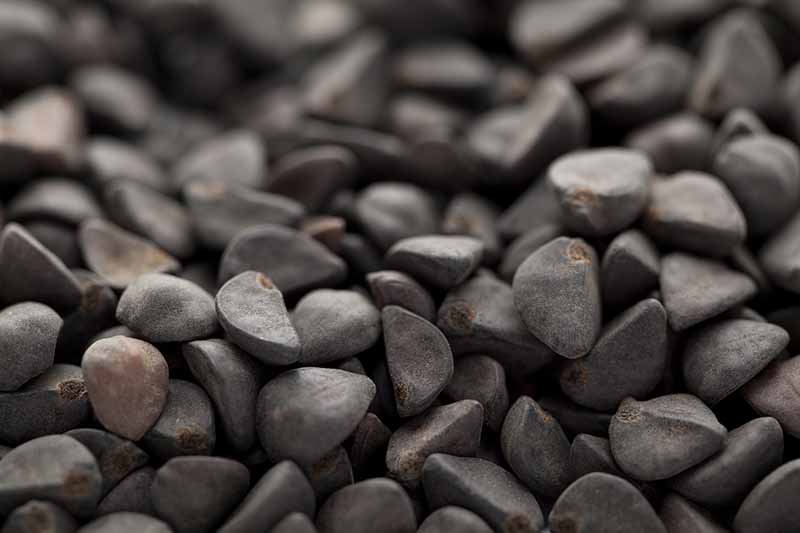
Some folks like to use the crisper drawer of the fridge, where the humidity is lowest, for storage. I sometimes keep mine in the freezer.
The less moisture that penetrates them, the longer they are likely to remain viable.
Collecting and Storing Morning Glory Seeds
This is quick and easy, so let’s jump right in!
Are morning glories invasive?!
FAQ
Should I remove seed pods from morning glory?
How do I identify my morning glory seed?
How do morning glory seeds spread?
What do morning glory seeds look like?
Morning glory seeds are known for their unique characteristics. These annual or perennial vines can grow up to 10 feet tall and produce large, trumpet-shaped flowers in a variety of colors, including shades of blue, purple, pink, white, and red. The flowers typically bloom in the morning and close in the afternoon, hence the name “morning glory.”
Do morning glories grow from seed?
Morning glories are a popular annual climbing vine grown for their brightly colored trumpet-shaped flowers. They are easy to grow from seed and will quickly cover a fence or trellis with their rapid growth. Look in-depth at morning glory seedlings and how they grow from seed to mature vines. How long do morning glory seeds take to germinate?
Do morning glories self seed?
Morning glories are renowned for their self-seeding. However, if you want more control over where they may grow again you can collect seeds from the plants. These free seeds can be collected once the pods develop and become hard and brown, ready to be stored and sown again the following spring.
What does morning glory look like?
Morning glory, Ipomoea purpurea, is a flowering annual vine for USDA Hardiness Zones 2 to 11. Native to Mexico, it has trumpet-shaped blooms that measure two to three inches across. Colors include blue, pink, purple, and white. We link to vendors to help you find relevant products. If you buy from one of our links, we may earn a commission.
- The Ultimate Guide to Growing Strawberries in Raised Beds - August 8, 2025
- No-Dig Garden Beds: The Easiest Way to Grow a Beautiful Garden - August 6, 2025
- How to Protect and Preserve Wood for Raised Garden Beds - August 6, 2025

